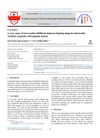TLDR A Taiwanese patient had hair loss and skin bumps without the usual gene mutation, suggesting other genetic factors might be involved.
In 2010, researchers documented a case of atrichia with papular lesions (APL) in a 19-year-old Taiwanese male and his family, who displayed typical symptoms of APL such as hair loss from a young age and the development of scalp papules, but without any detectable mutations in the hairless (HR) gene. This was notable because APL is usually associated with mutations in the HR gene, which is crucial for hair follicle cycling. The absence of mutations in the sequenced regions of the HR gene led the researchers to propose that the causative mutation might be in non-sequenced regions of the HR gene or in another gene that interacts with the HR protein. They recognized the need for further research to explore these possibilities.
69 citations
,
May 2002 in “Journal of Investigative Dermatology” Congenital atrichia with papular lesions is often misdiagnosed, and new diagnostic criteria can improve accuracy.
47 citations
,
April 2000 in “Experimental Dermatology” A new gene mutation causes a rare type of hair loss.
66 citations
,
December 1999 in “Journal of Investigative Dermatology” New mutations in the hairless gene may cause hair loss and affect bone development.
412 citations
,
January 1998 in “Science” A mutation in the human hairless gene causes alopecia universalis.
April 2012 in “Journal of evolution of medical and dental sciences” No effective treatment exists to stimulate hair growth in atrichia with papular lesions.
 4 citations
,
January 2011 in “Annals of Dermatology”
4 citations
,
January 2011 in “Annals of Dermatology” Researchers found a new mutation in the HR gene linked to a rare hair loss condition.
 September 2022 in “IP Indian journal of clinical and experimental dermatology”
September 2022 in “IP Indian journal of clinical and experimental dermatology” An 8-year-old girl has a rare genetic disorder causing complete, irreversible hair loss and skin bumps.
 April 2020 in “International journal of research in dermatology”
April 2020 in “International journal of research in dermatology” An 8-year-old girl has a rare, irreversible hair loss condition caused by a genetic mutation.
 9 citations
,
January 2015 in “Current problems in dermatology”
9 citations
,
January 2015 in “Current problems in dermatology” Scientists have found specific genes linked to different hair loss conditions, which could lead to new treatments.




